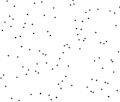lists. Sorting is also often useful for canonicalizing data and for producing human-readable output. Formally, the output of any sorting algorithm must...
71 KB (6,619 words) - 21:17, 15 July 2025
example, many sorting algorithms rearrange arrays into sorted order in-place, including: bubble sort, comb sort, selection sort, insertion sort, heapsort...
8 KB (1,151 words) - 06:39, 30 June 2025
set. Topological sorting is also possible when the DAG has disconnected components. The canonical application of topological sorting is in scheduling...
23 KB (3,170 words) - 16:32, 22 June 2025
Bubble sort, sometimes referred to as sinking sort, is a simple sorting algorithm that repeatedly steps through the input list element by element, comparing...
18 KB (2,309 words) - 13:38, 9 June 2025
Bogosort (redirect from Stupid sort/Bogo-sort)
computer science, bogosort (also known as permutation sort and stupid sort) is a sorting algorithm based on the generate and test paradigm. The function...
15 KB (1,891 words) - 00:54, 9 June 2025
In computer science, merge-insertion sort or the Ford–Johnson algorithm is a comparison sorting algorithm published in 1959 by L. R. Ford Jr. and Selmer...
11 KB (1,788 words) - 15:17, 30 October 2024
In computer science, radix sort is a non-comparative sorting algorithm. It avoids comparison by creating and distributing elements into buckets according...
20 KB (2,604 words) - 07:26, 30 December 2024
shaker sort is used primarily as an educational tool. More efficient algorithms such as quicksort, merge sort, or timsort are used by the sorting libraries...
9 KB (1,114 words) - 20:01, 4 January 2025
Bucket sort, or bin sort, is a sorting algorithm that works by distributing the elements of an array into a number of buckets. Each bucket is then sorted individually...
13 KB (2,190 words) - 16:52, 5 July 2025
External sorting is a class of sorting algorithms that can handle massive amounts of data. External sorting is required when the data being sorted do not...
14 KB (2,176 words) - 17:38, 4 May 2025
Collation (redirect from Radical-and-stroke sorting)
identifiers of the classes may be members of an ordered set, allowing a sorting algorithm to arrange the items by class. Formally speaking, a collation method...
18 KB (2,415 words) - 17:04, 7 July 2025
Insertion sort is a simple sorting algorithm that builds the final sorted array (or list) one item at a time by comparisons. It is much less efficient...
22 KB (2,921 words) - 20:49, 22 June 2025
Fisher–Yates shuffle (redirect from Algorithm P)
sorts the set according to the assigned numbers. The sorting method has the same asymptotic time complexity as Fisher–Yates: although general sorting...
42 KB (5,226 words) - 17:16, 8 July 2025
Quicksort (redirect from Quick sort)
published in 1961. It is still a commonly used algorithm for sorting. Overall, it is slightly faster than merge sort and heapsort for randomized data, particularly...
73 KB (10,092 words) - 13:13, 11 July 2025
Powersort (category Divide-and-conquer algorithms)
default list-sorting algorithm in CPython and is also used in PyPy and AssemblyScript. Powersort belongs to the family of merge sort algorithms. More specifically...
15 KB (1,590 words) - 01:53, 11 July 2025
efficient algorithms for many problems, such as sorting (e.g., quicksort, merge sort), multiplying large numbers (e.g., the Karatsuba algorithm), finding...
21 KB (2,894 words) - 09:50, 14 May 2025
science, merge sort (also commonly spelled as mergesort and as merge-sort) is an efficient, general-purpose, and comparison-based sorting algorithm. Most implementations...
50 KB (6,823 words) - 02:19, 14 July 2025
Introsort (redirect from Introspective sort)
Introsort or introspective sort is a hybrid sorting algorithm that provides both fast average performance and (asymptotically) optimal worst-case performance...
11 KB (1,227 words) - 09:46, 25 May 2025
greedy algorithm that in each step adds to the forest the lowest-weight edge that will not form a cycle. The key steps of the algorithm are sorting and the...
16 KB (1,829 words) - 21:02, 17 May 2025
science, patience sorting is a sorting algorithm inspired by, and named after, the card game patience. A variant of the algorithm efficiently computes...
10 KB (1,302 words) - 00:31, 12 June 2025
basis of other hidden-surface determination algorithms. The painter's algorithm creates images by sorting the polygons within the image by their depth...
14 KB (1,467 words) - 02:52, 25 June 2025
AlphaDev (section LLVM standard sorting library)
AlphaDev applies the same approach to finding faster algorithms for fundamental tasks such as sorting and hashing. On June 7, 2023, Google DeepMind published...
11 KB (1,160 words) - 07:13, 9 October 2024
counting sort is an algorithm for sorting a collection of objects according to keys that are small positive integers; that is, it is an integer sorting algorithm...
12 KB (1,591 words) - 06:08, 23 January 2025
In computer science, selection sort is an in-place comparison sorting algorithm. It has a O(n2) time complexity, which makes it inefficient on large lists...
12 KB (1,724 words) - 11:10, 21 May 2025
an ordered sequence is called "sorting". Sorting is a common operation in many applications, and efficient algorithms have been developed to perform it...
6 KB (778 words) - 16:31, 19 May 2024
lists in sorted order. These algorithms are used as subroutines in various sorting algorithms, most famously merge sort. The merge algorithm plays a critical...
16 KB (2,090 words) - 18:45, 18 June 2025
Comb sort is a relatively simple sorting algorithm originally designed by Włodzimierz Dobosiewicz and Artur Borowy in 1980, later rediscovered (and given...
7 KB (832 words) - 05:45, 22 June 2024
A comparison sort is a type of sorting algorithm that only reads the list elements through a single abstract comparison operation (often a "less than...
21 KB (2,640 words) - 15:35, 21 April 2025















